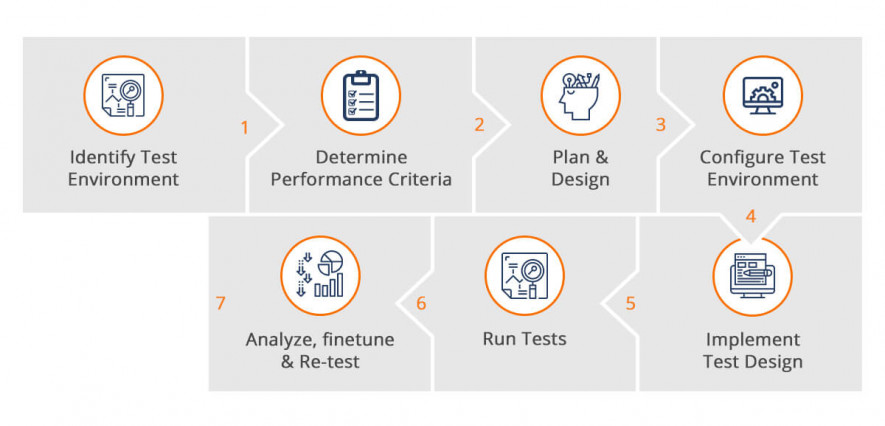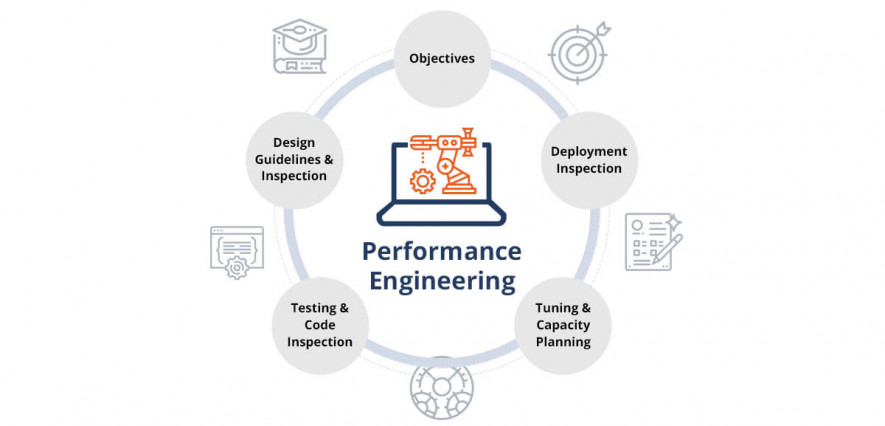- QATestLab Blog >
- QA Basics >
- Performance Testing vs Performance Engineering
Performance Testing vs Performance Engineering

Note: the article was updated in September 2020.
There is plenty of information explaining, characterizing and comparing performance testing and performance engineering. These two notions are different concepts, but the boundaries are so vague that they cause a lot of misunderstandings.
Software specialists understand the set of skills necessary to perform as a tester or an engineer. To get a clear interpretation, we should highlight the core concepts and differences.
Performance Testing
This type of testing is carried out to check the product’s speed, scalability and stability sticking to the end user’s mode of behavior.
- speed – checks if the application replies fast enough
- scalability – finds out the maximum number of users who can simultaneously work with the application
- stability – checks if the software application is resistant to various loads
A qualified performance tester should be good at testing tools. Among the most popular tools present on the market, there are NeoLoad, WebLOAD, Jmeter, Gatling, and LoadRunner.
According to these types of testing, a performance tester prepares the tests that will be executed to determine system bottlenecks. The revealed issues are then passed to developers for analyzing and solution. Here is the example of the performance testing process:

Performance Engineering
This field includes systematic practicing, applying techniques, and meeting requirements on each stage of SDLC – Software Development Life Cycle. A performance engineer possesses more diverse skills as compared to a performance tester. An engineer always digs deeper. He/she does not only identify a problem but finds out its causes and possible solutions. This profession demands good testing experience as well as other numerous skills:
- ability to analyze the system architecture and suggest ways out for better performance
- competence in using database monitoring and code profiling tools
- performing data creation and test design, statistical analysis and distribution
- experience in using deep dive tools (HP Diagnostics, CA Wily, Jprobe, etc.)
- good experience in applying performance testing tools (NeoLoad, WebLOAD, Jmeter, Gatling, etc.)
- efficient communication, business knowledge, and management skills
- ability to monitor, tune, and forecast
A performance tester can become an engineer in this sphere if he/she possesses the above-listed skills. Together with the new appointment, there will be new duties and activities for the performance engineer:

Performance engineering stands for both: problem investigation and intervention. The team works on the investigation to define a problem and make the necessary corrections. Below is the example of an average performance engineering process:

The solution proposed by an engineer must meet the specified expectations on all stages of development. This will help to avoid code rewriting in the course of meeting the deadline.
Differences
Performance Testing is mostly about checking the system’s responsiveness under the given conditions. Its main task is to define the bottlenecks of the tested application.
Performance Engineering goes through the whole process of the Software Development Life Cycle. Its main objective is to find, design and implement the solution for the identified problem.
Conclusion
Performance Testing and Performance Engineering complement each other still having noticeable differences. They have the common goal and should come together being result oriented. The performance testing and engineering should cooperate and be in focus from the very beginning of a product’s lifecycle. This will ensure the quality and proper functioning of a final product.
Learn more from QATestLab
Related Posts:
- Functional vs Performance Testers
- Software Quality Trends in 2026: Key Changes Shaping Modern QA
- Decoding the Science of Software Testing for Hardware
About Article Author
view more articles
has 3-year experience in blogging, technical writing, and copywriting.
View More Articles







No Comments Yet!
You can be the one to start a conversation.